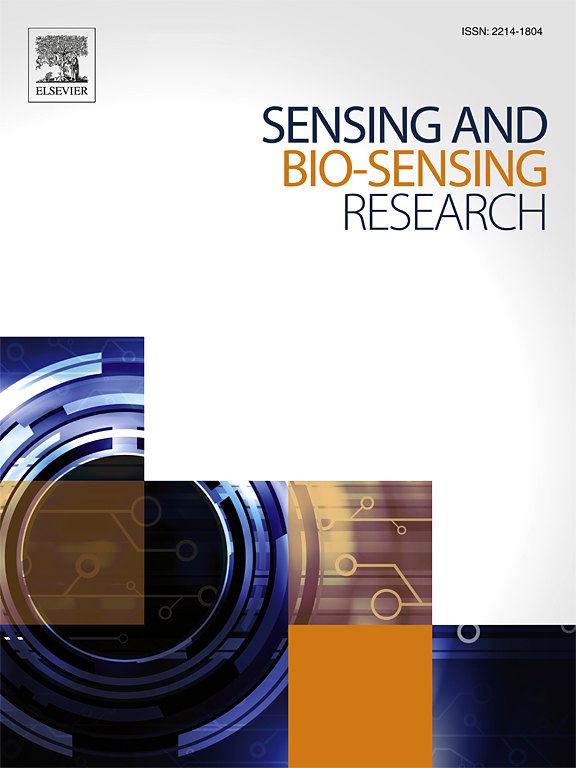用紫外可见分光光度法和数字图像分析测定电解质比色用纳米银
IF 4.9
Q1 CHEMISTRY, ANALYTICAL
引用次数: 0
摘要
研究了使用银纳米粒子(AgNPs)比色法测定钠、钾、钙和镁电解质,作为现有的基于aunp的方法的替代方法。探索了不同的合成路线,并对所得溶液进行了表征和纯化,将粒径从27±15 nm减小到10.3±1.4 nm。采用紫外-可见光谱法和主成分分析(PCA)来评价纯化过程的成功与否。色度响应是用赖氨酸实现的,赖氨酸导致NPs聚集,并导致从黄色到深橙色和红色的可见颜色变化。采用紫外可见光谱法和数字图像分析(DIA)检测,均获得较好的结果(R2分别为0.987 ~ 0.998和0.959 ~ 0.997)。通过UV-Vis,开发了使用AgNPs的Na+和Ca2+的第一种方法,通过DIA,开发了所有四种电解质的第一种方法。最后,通过广泛的文献检索,确定了有关AgNPs合成和使用的几个关键方面,并提出了一些一般考虑。本文章由计算机程序翻译,如有差异,请以英文原文为准。
Silver nanoparticles for the colorimetric determination of electrolytes by UV–vis spectrophotometry and digital image analysis
The use of silver nanoparticles (AgNPs) for the colorimetric determination of sodium, potassium, calcium, and magnesium electrolytes was investigated as an alternative to the existing AuNP-based methods. Different synthetic routes were explored, and the characterization and purification of the obtained solutions was performed, reducing particle size from 27 ± 15 nm to 10.3 ± 1.4 nm. A procedure employing UV–Vis spectroscopy and Principal Component Analysis (PCA) is proposed to evaluate the success of the purification process. The colorimetric response was achieved with the amino acid Lysine, which causes the aggregation of NPs and leads to a visible color change from yellow to dark orange and red. UV–Vis spectroscopy and digital image analysis (DIA) were used as detection methods, obtaining good results in all cases (R2 0.987–0.998 and 0.959–0.997, respectively). By UV–Vis, the first method for Na+ and Ca2+ using AgNPs was developed, and by DIA, the first method for all four electrolytes. Finally, an extensive literature search led to the identification of several critical aspects regarding the synthesis and use of AgNPs, and some general considerations were raised.
求助全文
通过发布文献求助,成功后即可免费获取论文全文。
去求助
来源期刊

Sensing and Bio-Sensing Research
Engineering-Electrical and Electronic Engineering
CiteScore
10.70
自引率
3.80%
发文量
68
审稿时长
87 days
期刊介绍:
Sensing and Bio-Sensing Research is an open access journal dedicated to the research, design, development, and application of bio-sensing and sensing technologies. The editors will accept research papers, reviews, field trials, and validation studies that are of significant relevance. These submissions should describe new concepts, enhance understanding of the field, or offer insights into the practical application, manufacturing, and commercialization of bio-sensing and sensing technologies.
The journal covers a wide range of topics, including sensing principles and mechanisms, new materials development for transducers and recognition components, fabrication technology, and various types of sensors such as optical, electrochemical, mass-sensitive, gas, biosensors, and more. It also includes environmental, process control, and biomedical applications, signal processing, chemometrics, optoelectronic, mechanical, thermal, and magnetic sensors, as well as interface electronics. Additionally, it covers sensor systems and applications, µTAS (Micro Total Analysis Systems), development of solid-state devices for transducing physical signals, and analytical devices incorporating biological materials.
 求助内容:
求助内容: 应助结果提醒方式:
应助结果提醒方式:


